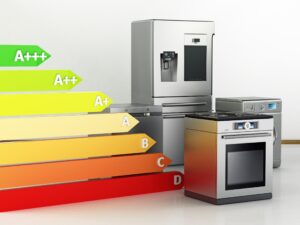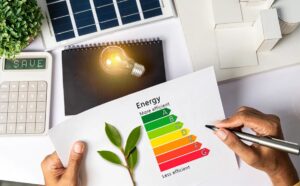
- E-Mail senden
G R A N D
BLOG


How to Conduct a Home Energy Audit and Slash Your Utility Bills
Introduction
Are your energy bills higher than expected? Conducting a home energy audit can help you identify inefficiencies, reduce your energy consumption, and save money. The good news is that you don’t need to be an expert to get started. Here’s a step-by-step guide on how to perform an energy audit at home, find common energy drains, and improve your household efficiency.
Step 1: Analyze Your Energy Bills
Begin by reviewing your utility bills over the past year. Look for patterns in your energy consumption, such as spikes during particular months. High heating and cooling bills often indicate issues with insulation or inefficient systems. This will help you prioritize areas to focus on during your audit.
Step 2: Inspect Your Insulation
Poor insulation is one of the leading causes of energy loss in homes. Start by inspecting your attic, walls, floors, and basement. Check for drafts or gaps, and feel for cold spots, especially near doors, windows, and electrical outlets. If your home’s insulation is lacking, consider adding more insulation to prevent heat loss.
Step 3: Check for Air Leaks
Air leaks can significantly impact heating and cooling efficiency. Perform a DIY air leak test by lighting a candle or incense stick and holding it near windows, doors, and vents. If the flame flickers or smoke drifts in one direction, you’ve found a leak. Seal leaks with caulk, weather stripping, or door sweeps to improve your home’s thermal efficiency.
Step 4: Evaluate Your Windows and Doors
Older windows and doors can let in drafts and cause significant energy waste. Check for any signs of worn-out seals or cracks in the frames. Consider upgrading to energy-efficient windows or adding storm doors to reduce heat transfer. Window treatments like blinds and curtains can also help retain warmth during winter and block excess heat in summer.
Step 5: Assess Your Heating and Cooling Systems
Heating and cooling systems are the largest energy consumers in most homes. Check your furnace, air conditioner, and water heater to ensure they’re functioning properly. Replace air filters regularly to maintain efficiency. Consider upgrading to a programmable thermostat, which allows you to adjust the temperature based on your schedule, reducing unnecessary energy use.
Step 6: Review Your Lighting
Lighting accounts for about 10% of a home’s energy usage. Switch to energy-efficient LED or CFL bulbs, which use less electricity and last longer than traditional incandescent bulbs. Also, make it a habit to turn off lights when not in use and take advantage of natural light during the day.
Step 7: Inspect Appliances and Electronics
Old appliances and electronics can be significant energy hogs. Use a power meter to measure how much electricity your devices consume when plugged in. Consider upgrading to Energy Star-rated appliances, which are designed to be more energy-efficient. Also, unplug electronics when they’re not in use, as they can still draw power even when turned off, a phenomenon known as “phantom energy.”
Step 8: Consider Renewable Energy Options
If you’re looking to make a long-term investment in energy savings, consider adding renewable energy sources such as solar panels. Although the upfront costs can be high, renewable energy can dramatically reduce your energy bills over time and increase the value of your home.
Conclusion: Take Action on Your Audit Findings
Once you’ve completed your home energy audit, create an action plan to address the inefficiencies you discovered. By making small, energy-saving upgrades, you can not only reduce your carbon footprint but also save significantly on your monthly utility bills. Conducting a home energy audit is an empowering way to take control of your energy consumption and contribute to a more sustainable future.
Bonus Tip: Some local utility companies offer free or low-cost professional energy audits, which provide even deeper insights into your home’s energy performance.
You Might also Like


The Role of Renewable Energy in Saving Money An overview of solar, wind, and other options for homeowners






